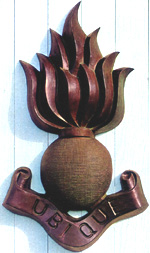

official site
Terms
The Canadian Forces Decoration is awarded to officers and men of the Canadian Forces who have completed twelve years of service. The medal is awarded to all ranks, who must have a good record of conduct during the final eight years of claimed service. The medal is awarded to the regular forces, reserve forces and to officers to the Cadet Instructors List (CIL). Service in the regular and reserve of auxiliary forces of the British Commonwealth of Nations will be counted towards the medal if the final five years have been with the Canadian Forces and no other long service, good conduct or efficiency medal has been awarded for the same service. The medal may be awarded to persons in possession of any long service, good conduct or efficiency decoration or medal clasps, provided that the individual has completed the full qualifying periods of service for each award and that no service qualifying towards one award is permitted to count towards one award is permitted to count towards any other. The service need not be continuous. This award supersedes all other awards for members joining the Canadian Forces after 01 September 1939.
Bars
A bar shall be awarded for every subsequent period of ten years of qualifying service. The tombac bar is 0.25 inches (6 mm) high, has the Canadian coat of arms in the centre surmounted by a crown, and is gold in colour. The bar for this medal is called a clasp.
Description
It is a decagonal (ten-sided, representing the ten provinces) medal, 1.4375 inches across the flats, with raised busts. The King George VI medal is .800 fine silver, finished in silver gilt. The Queen Elizabeth II medal is tombac (a copper-zinc alloy). Both medals are gilt (gold) in colour with the Queen Elizabeth II medal being brighter than King George VI.
Obverse
(a) The uncrowned coinage head of King George VI, facing left, with the inscription: GEORGIVS VI D : G : BRITT : OMN : REX FID : DEF : around the edge.
(b) The uncrowned coinage head of Queen Elizabeth II, facing right, with the inscription around the edge: ELIZABETH II DEI · GRATIA REGINA · CANADA · with the word CANADA being at the bottom.
Reverse
A crown, three maple leaves and an eagle representing the navy, army and air force from top to bottom. The word SERVICE is on a scroll at the base and a fleur-de-lis is on each side of the crown. The Royal Cypher is superimposed on the centre of the King George VI medal, but is omitted from the Queen Elizabeth II medal.
Mounting
(a) The King George VI medal has a solid bar with CANADA on it and this is attached by scroll arms welded to the top of the medal. This proved to be a poor mounting as the welds broke off many of the early medals.
(b) The Queen Elizabeth II medal does not have the solid bar. Thus the ribbon passes through a narrow bar between the scroll arms. A small maple leaf is at the base of the scroll arms.
Ribbon
The ribbon is gules (red), 1.5 inches (39 mm) wide, with three equally spaced argent (silver) stripes and a single argent stitch on each edge. In more understandable language, orange-red with three white stripes and a single white stitch on each edge. A silver rosette is worn on the undress ribbon for each bar awarded.
Dates
Initiated on 15 December 1949, and first awarded on 01 September 1951, the medal replaced all other long service awards for those joining the Canadian Forces after 01 September 1939 and is still current.
Naming
(a) King George VI: Name and rank are engraved on the reverse of the solid bar.
(b) Queen Elizabeth II: Name and rank are stamped on bottom edge.
Awarded to Royalty and Nobility
Most members of the Royal Family have appointments as Colonel-in-Chief of various regiments, as do many members of British nobility. Their service has been recognised by the conferment of a CD. Some of these are mentioned here:
